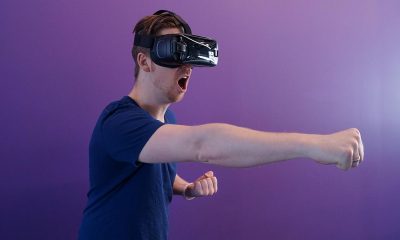Top Stories
Men in Four Lads in Jeans Memes Get Vindication After Signing McDonald’s Deal
Published
4 years agoon

Who would have thought that a boys’ night out one July evening in 2019 will turn into a nightmare? Not Kevin Rooney, Alex Lacey, Jamie Phillips, and Connor Humpage, who have unwillingly gained notoriety as the Four Lads in Jeans.
Poised to have a fun night in Birmingham, these guys got off the train and, as usual with pals going out, asked someone to take a snapshot. Satisfied with the photo, they went on to share it on their Instagram accounts and got ready to start the night with some good time.
How The Four Lads Became Viral

The photo was then forgotten, and life went on as it usually has. Then, a few weeks after that fateful night, they were shocked to see that the particular picture resurfaced. This time as a meme that would haunt them for the next 18 months.
Not one of these men ever imagined being in the center of everyone’s attention, but here they are, already dubbed as the Four Lads in Jeans. Going viral was the least thing on their thoughts when they went out that night. Especially for being ridiculed and used as a meme, lots and lots of memes.

Since then, they have been subjected to all kinds of trolling and hurtful messages. It was definitely heartbreaking to read comments such as telling them to kill or hang themselves and other abusive messages. Some even went overboard to call them at their work numbers just to prank them.
The abuse went on to the point that even their mental states were affected. A few of them considered closing down their social media accounts. The four men may have an idea why they were meme-fied but knew that absolutely nothing deserves that much hatred and vitriol.
From Hateful Comments to Getting Love

Then the winds started to change directions when someone edited their photo to look like they were singing the TikTok Sea Shanty. They were once again thrust into the limelight, but this time, for good reasons. Moreover, the men have been approached by agents with offers from big-named brands, one of which is McDonald’s.
They are now getting their vindication as former trolls are now sending apologetic messages. In an interview with The Mirror, Jamie says that they’re just normal lads who can take a joke, but not when it starts getting personal. The vile comments were just never-ending as were “the thousands of just abuse.”

After a harrowing eighteen months of offensive messages, they are now “getting a lot of love,” says Kevin. The abuse seemed to have stopped, and happily, the four men are now getting positivity from all that debacle. And now that they have a platform, they are less likely to get abused.
These guys agree that how you dress should never be a reason to throw sickening comments at anyone. They believe that it may be a cause for concern for people without a thick skin. They are now advocating to raise awareness for mental health and cyberbullying.
Fame for The Four Lads

The Four Lads are currently enjoying this newfound fame and had to turn down offers as it was getting hard to handle for them all. They are getting the most out of going viral as opportunities are now lined up for them. McDonald’s is the first among many.
Their shot to internet stardom made the burger giant notice them. The four lads were offered to promote McDonald’s Click & Serve. This is the restaurant’s Covid-19 solution for customers to collect food and avoid the drive-through queues.
Being big fans of the fast-food giant themselves, they are taking it all in and enjoying themselves. Quite a respite from all the hatred that came their way. Calling it a privilege to do the promoting for McDonald’s, Kevin says they were chuffed when McDonald’s asked them to help promote and educate people about how to use Click & Serve.
In a video, Kevin is shown ordering from the McDonald’s app but gets interrupted by a call from his mother. He then proceeds to give a step-by-step guide on how to place your order which is to use the app, drive to the nearest McDonald’s outlet, and park in the parking bays especially designated for Click & Serve customers.
You may like
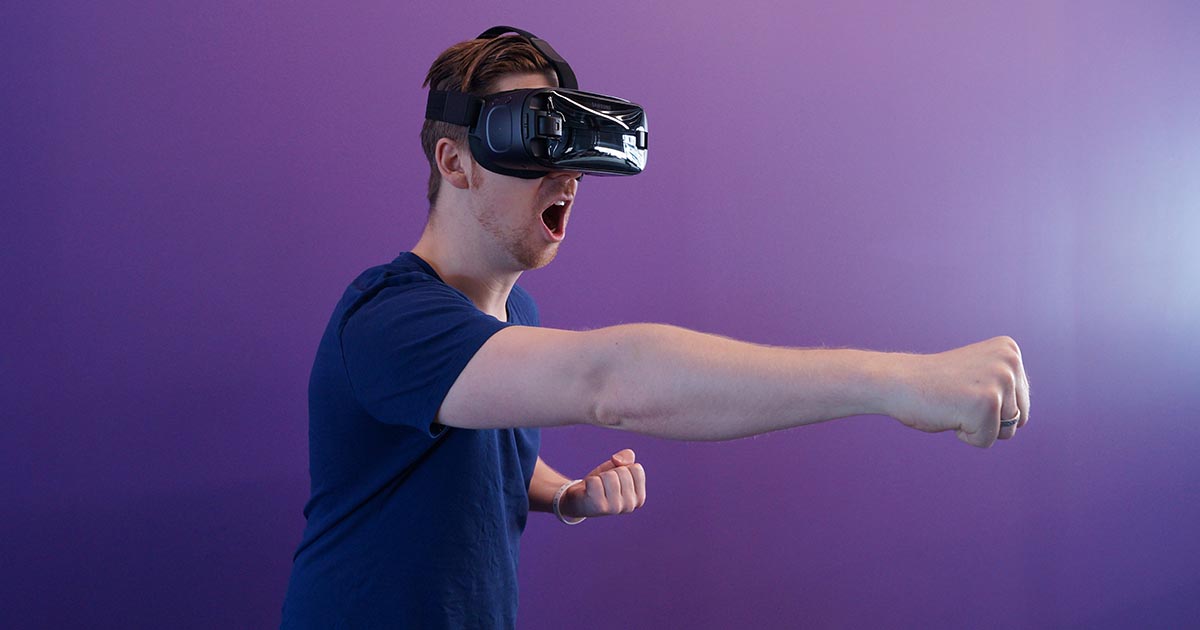
Ever felt dizzy or nauseous after using your laptop or smartphone? These could be signs of cybersickness. But what is cybersickness? Angelica Jasper, a Ph.D. student in Human-Computer Interaction at Iowa State University, explains its symptoms and how to cope with it
What is Cybersickness?
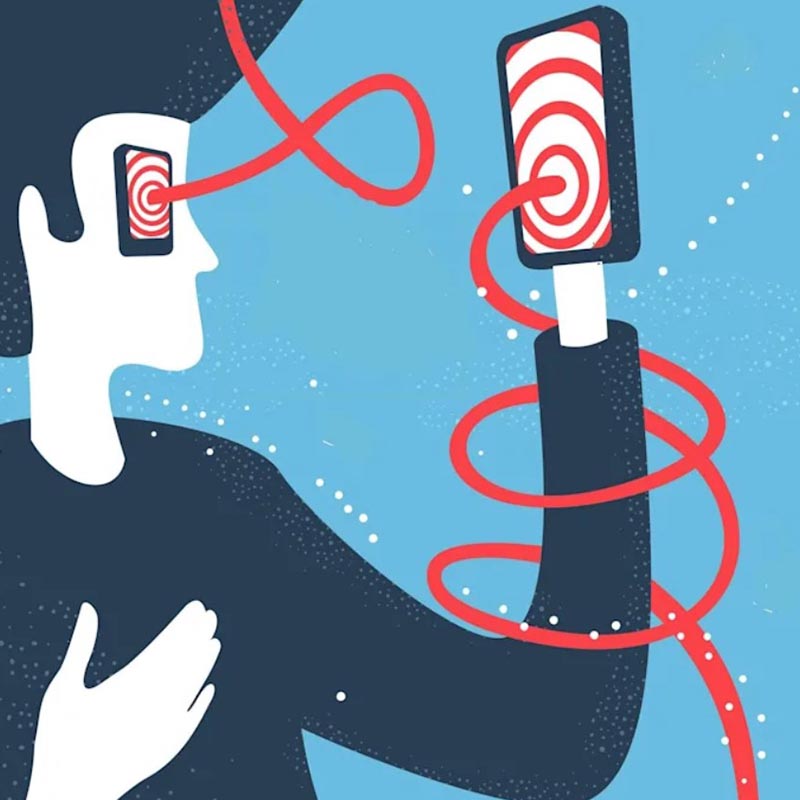
Cybersickness is a cluster of symptoms during the absence of physical motion, akin to motion sickness. These symptoms are categorized into nausea, oculomotor issues, and general disorientation. Oculomotor symptoms, including eye strain, fatigue, and headaches, involve stressing the nerve that controls eye movement. Disorientation can manifest as dizziness and vertigo. Meanwhile, several cybersickness symptoms overlap categories, such as difficulty concentrating and blurred vision. These issues can persist for several hours and may affect sleep quality.
People can experience the symptoms when using daily devices like computers, phones, and TV. In 2013, Apple introduced a parallax effect on iPhone lock screens that made the background image seem like it floated when a user moved their phone around. But, many people found it extremely uncomfortable. Surprisingly, the reason behind the discomfort is that it triggered cybersickness symptoms.
However, some researchers have different views about why people experience cybersickness. For instance, sensory conflict theory assumes that it is due to a mismatch of information sensed by our body parts that regulate vision and balance. Using every device can cause this conflict between visual perception and physical experience.
Cybersickness in Virtual and Augmented Reality
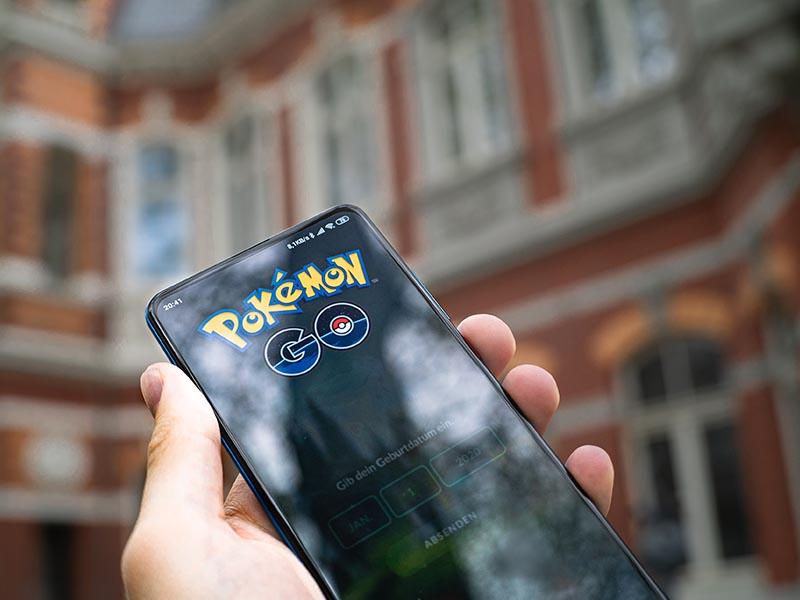
Cybersickness symptoms are perceived to become more intense with virtual reality (VR) and augmented reality (AR).
VR is widely available through popular gaming platforms like Facebook’s Oculus devices and Sony PlayStation VR. VR can trigger severe levels of nausea that increase with the duration of use. Also, this can cause some applications and games unusable for many individuals.
AR, on the other hand, are head-mounted devices that allow the user to see what’s in front of him. This includes games like Pokémon Go, accessible on your phone or tablet. Prolonged use of AR devices can result in more severe oculomotor fatigue.
A rise in the popularity of owning AR and VR devices can trigger an increase in cybersickness symptoms. Research and Markets estimate that adopting these technologies for various purposes may grow over 60 percent and reach USD 905.71 billion by 2027.
Cybersickness Symptoms Is Dangerous
While cybersickness symptoms may initially appear mild, they can have enduring effects over time. This may not seem like a big issue initially, but lingering symptoms may affect your ability to function well and could be dangerous. Symptoms such as severe headache, eye strain, or dizziness could affect your coordination and attention. If these symptoms persist while driving, it could lead to a car accident.
How to Deal With Cybersickness

If you are experiencing cybersickness symptoms, there are a few ways to ease the discomfort.
- Use blue light glasses to block out some of the blue light waves on your device screen.
- Zoom in your device screen or use larger font sizes to lessen eye strain and make daily work more sustainable and productive.
- Adjust devices visually, so your eyes are as comfortable as possible.
- Use devices in open spaces to reduce the risk of getting injured if you get dizzy and lose your balance.
- Take a short break if you start to feel any discomfort.
Proper Use of New Technology
The work-from-home trend has grown as a result of the COVID-19 pandemic. Commuting to work at an office setup was replaced with staying at home and enduring endless Zoom meetings. Even though the convenience is undeniable, it has also come with an increasing awareness of how hard it can be to look at a screen for over 40 hours per week.
However, don’t let cybersickness affect your motivation. As researchers continue to find ways to address cybersickness across all devices, people may be able to enjoy advancements in innovative technologies in the future without feeling uncomfortable.
Top Stories
Chess Robot Breaks Boy’s Finger While Competing in Tournament
Published
2 weeks agoon
August 1, 2025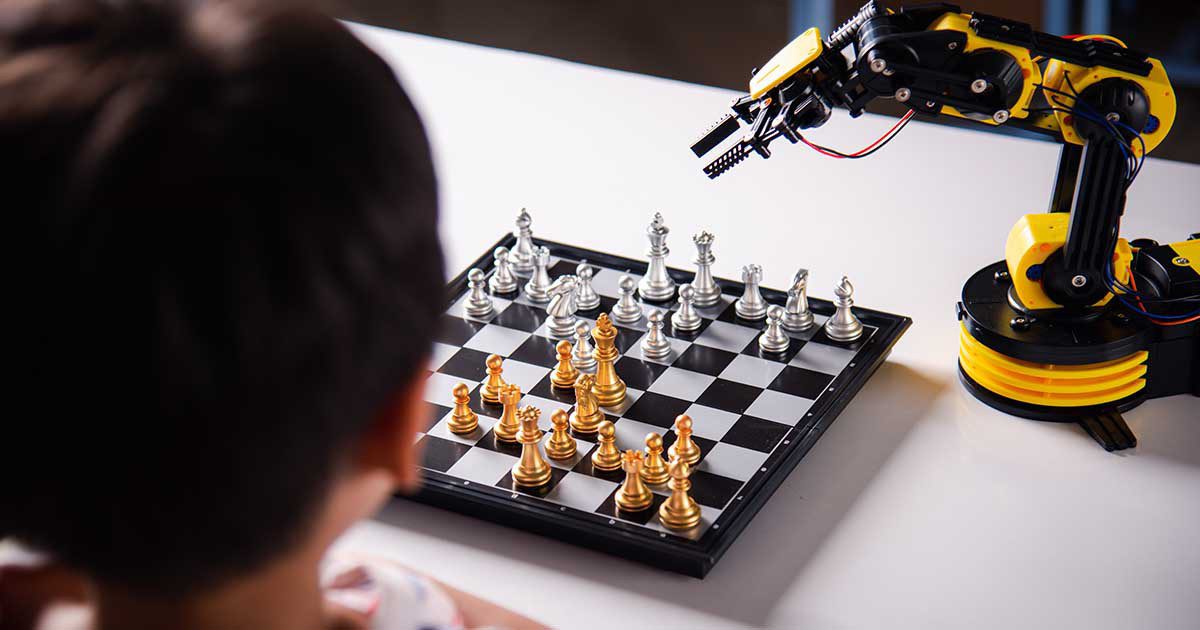
Artificial intelligence has long played a role in the game of chess, with intelligent robots even challenging grandmasters. But in a shocking incident, a chess robot breaks a boy’s finger during a competition in Russia, raising serious concerns about safety around AI-powered machines.
In late July, video footage went viral showing the robot gripping the hand of its young opponent. The 7-year-old boy suffered a fractured finger after being held for roughly 15 seconds before the robot finally released him.
According to the Moscow Chess Federation, the incident happened during a tournament designed to showcase technological advancements in the game.
A freak incident?
In an interview with Tass, a state-controlled news network, the chess federation said the boy hurried the robot. The event took place during the Moscow Open Chess Competition.
The video shows the robot reaching for the boy’s piece and discarding it. In response, the boy attempted another move. He pushed one of his rooks to the spot of the recently moved piece. But, the robot’s arm had yet to retract.
So, the robot reached its mechanical claws toward the board. But instead of reaching for a chess piece, it grabbed the boy’s fingers for about 15 seconds. Two bystanders jumped to action and tried to pry the claws open. But, the chess robot had already fractured the boy’s finger.
Sergey Lazarev, a representative of the federation, reacted to the situation. He begins by clarifying that there were certain safety rules that the child violated. “When he made the move, he did not realize he first had to wait,” he said.
Lazarev also noted that prior to the incident, the machine had played other matches. All went without a hitch. He still stands that the robot is safe. But because the chess robot breaks the boy’s finger, he says, “This is, of course, bad.” He added that the children “apparently need to be warned” about the safety rules. Nevertheless, the boy continued playing in the competition with his hand on a cast.
Furthermore, he also revealed that the boy’s parents were thinking of calling the prosecutor’s office. Lazarev promised that the federation “will communicate, try to sort it out and help in any way we can.”
He added that the robot operators have to do some thinking, so the situation doesn’t happen again.
Chess Robot Breaks Boy’s Finger Incident Elicits Online Reactions

News outfits say a Telegram post from Baza News named the boy Christopher. According to the outlet, he is in the top 30 list of best chess players under 9.
Since videos of the event went online, social media users expressed a lot of fear.
Garry Kasparov, a Soviet Era world chess champion, even tweeted: “I tried to warn you!” Kasparov had been famously defeated by an AI chess robot himself. In 1997, the supercomputer Deep Blue, programmed by IBM scientists, defeated Kasparov in a six-game match.
And since Kasparov’s bitter loss, scientists have only strengthened chess robots. Even today, a joint chess program by Microsoft, Cornell University, and the University of Toronto is in the works. Entitled Maia Chess, the program seeks to use chess as a case study to help AIs develop human skills.
And the chess robot breaks boy’s fingers incident may serve as a case study itself.
AI in chess
Notably, AI in chess has been popularized since the late 90s. It’s not uncommon to find chess apps and games which put players against robots.
The system itself began taking shape in the 70s. By then, scientists have created chess-playing calculators. Deep Blue was created in 1989. But that same year, it was defeated by Kasparov in two games. Scientists then continued to program Deep Blue until it could defeat Kasparov.
But since chess robot breaks boy’s fingers, operators have a new puzzle to figure out. And that’s to guarantee the safety of human opponents.
And for other news, read more here at Owner’s Mag!
Top Stories
Scientists May Soon Predict Earthquakes with 80% Accuracy Two Days in Advance
Published
3 weeks agoon
July 25, 2025
There are many ways that Earth hints an earthquake is coming. Sometimes it’s through the groundwater level. In the past, scientists have used radon to predict seismic movement. But none of these gives us an accurate picture of the ‘strength of earthquakes. Nor do they tell us how long it will last and where it will strike. If only there were a method to predict earthquakes with 80% accuracy, then preparedness and response would be a lot more efficient.
It used to seem impossible; after all, studying earthquakes was a complex puzzle that had confounded scientists for decades. That is—until now. Recently, Israeli scientists have discovered a way to predict earthquakes with 80% accuracy 48 hours before they strike. A joint team from Ariel University and the Center for Research and Development Eastern Branch made the discovery.
Their peer-reviewed study, which detailed how the system works, was published in the science journal Remote Sensing in May. With the effects of earthquakes on human ecosystems, this discovery may provide humans with the advantage they need.
How do researchers predict earthquakes with 80% accuracy

Earthquakes, like many seismic events, are quite hard to predict. It’s difficult to read the Earth’s movements. And most scientists struggle to read signals in time to send out warnings.
Granted, there are various ways that scientists currently use to predict quakes. But these don’t tell us how long, how strong, and where these tremors will be felt. In short, though predicting earthquakes is essential, we don’t have a great way of doing it yet.
So, a system that predicts earthquakes with 80% accuracy 48 hours before strikes can help us greatly.
But Israelian researchers have used an unlikely method to trace tremors and quakes: the sky. Or specifically, the ionosphere. This is the part of the sky that meets the vacuum of space.
The scientists used a GPS map of the ionosphere’s total electron content. They combined this with their machine learning techniques on a support vector machine algorithm. Using these two, the researchers calculated the electron charge density of the ionosphere.
Using this method, scientists have been able to predict major earthquakes over the last 20 years. They classified “major” as an event with an Mw of 6 or higher on the Moment magnitude scale. This discovery proved that their systems predict earthquakes with 80% accuracy.
They also managed to predict with 87.5% accuracy areas where the quakes will not hit.
The study was made by Dr. Yuval Reuvani, Dr. Li-Ad Gotlieb, Dr. Nimrod Imbar, and graduate student Said Asali. The study was funded by Israel’s Ministry of Energy and the Israel Science Foundation.
How can this be applied?
Earthquakes carry with them a slew of other risks. Therefore, it’s essential that this discovery can be applied in real-life situations.
With the new tech, countries near the Rim Of Fire may have a better chance of bracing for quakes. Major earthquakes can cause massive destruction to landscapes and communities. This is especially true for individuals living in mountains and other sloped areas. Things get even more dangerous in cities, where people are packed tightly in high-rise buildings.
Worse, aftershocks can trigger tsunami waves, making them dangerous for coastal provinces. Without a solid technology to predict quakes, a robust natural disaster could wipe out entire cities. And often, it takes years to recover from natural disasters.
Furthermore, some studies point out that climate change can increase the likelihood of earthquakes. With rising temperatures, it’s not hard to trigger earthquake faults with rising sea levels. Since temperatures have tipped nature’s balance, there’s no telling which way the causes of earthquakes can come from.
So, a system that predicts earthquakes with 80% accuracy 48 hours before is advantageous, especially if we’re all waiting for the big one. Scientists may soon detect earthquakes two days before they strike.
And for other news stories, read more here at Owner’s Mag!

What Is Cybersickness And How To Deal With It

10 Trusted Customer Feedback Tools Used by Many Businesses

10 Popular Competitor Research Tools To Stay Ahead of the Game

Top 10 Recruiting Tools Business Owners Should Know About

Level Up Your Marketing with These 10 Content Marketing Tools

Chess Robot Breaks Boy’s Finger While Competing in Tournament

10 Audience Research Tools to Help You Understand Your Market
10 Affiliate Tracking Software Tools to Grow Your Online Income

10 Audience Research Tools to Help You Understand Your Market

These Anti-MLM Communities Are Saving People from Scams

10 Trusted Customer Feedback Tools Used by Many Businesses

What Is Cybersickness And How To Deal With It

Level Up Your Marketing with These 10 Content Marketing Tools


